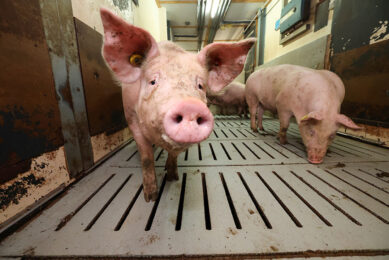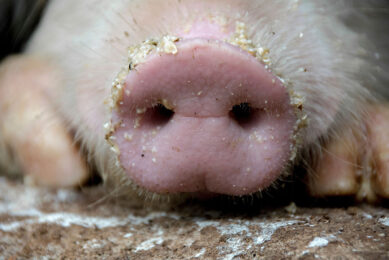PRRS costs US industry $664 million annually

A new study, underwritten by the US Pork Checkoff and conducted by Iowa State University, estimates that porcine reproductive and respiratory syndrome (PRRS) continues to be a major drag on the US pork industry – costing the pork industry $664 million per year.
This translates into $1.8 million per day or $114.71 per sow annually. The previous economic study in 2005 calculated PRRS losses at $560 million annually.
National Pork Board president Everett Forkner, said, “This Checkoff-funded work offers producers, veterinarians and every part of the pork chain a new and valuable insight into the economic impact of PRRS and underscores why we’ve leveraged domestic and international government funds to offer producers tools for regional control of this virus.”
The 2011 study differed most significantly from the 2005 study in the allocation of losses between the breeding and the growing pig herds. Specifically, losses in the growing pig herd accounted for 88% of the total cost of PRRS in the 2005 study compared with 55% in the current analysis.
Differences
Iowa State University veterinarian Derald Holtkamp and agricultural economist Jim Kliebenstein collaborated on the study with others in academia, swine veterinarians in private practice and the USDA. They found that differences between the 2005 and the 2011 studies may be attributed to several key factors, including changes in the prevalence of PRRS virus and incidence of outbreaks, production and animal health management practices, inflation (accounts for 40% of the increase) and other pathogens that have emerged since 2005, such as porcine circovirus.
The report summary stated, “Since the 2005 study, pig production and health strategies have evolved, PRRS virus control/elimination strategies have improved and structural adjustments have occurred in the industry. Because of these developments, it was reasonable to question whether the incidence, severity and/or impact of PRRS outbreaks on pig health and productivity in the US herd may have changed since the 2005 study was conducted.”
New study
The new study collected much of its data from cooperating producers and veterinarians across the United States in late 2010. While not benchmarked in 2005, additional PRRS-related costs that producers must contend with, such as veterinary and biosecurity measures, were collected in this study. Researchers found these costs added $477.79 million annually to total PRRS costs, putting the cumulative cost of the disease at more than $1 billion per year when added to production-related losses.
Based upon a survey of swine veterinarians from across the United States, the study’s researchers were able to estimate additional PRRS statistics. They found that 28% of sows and gilts used for breeding in the United States were PRRS virus-free and 60% of weaned pigs were PRRS-negative at placement.
Outbreaks
“This study also confirmed conventional wisdom that says outbreaks in PRRS virus-free herds are more severe than outbreaks in PRRS virus-infected herds,” Holtkamp said. “When comparing elimination methods, we found that the time required for herds to provide a return on investment was still relatively short with herd closure and rollover. However, we found that complete depopulation/repopulation appears to make economic sense only if there are other reasons to depopulate the herd or for high-value genetics herds.”
According to Lisa Becton, Checkoff’s director of swine health, the complete Checkoff-funded research study on PRRS will serve as a valuable resource for producers, veterinarians and the entire industry for years to come as more of its data is analyzed. She said the full report is expected to be available in coming months and will be available on pork.org.
Related websites:
• National Pork Board
• Iowa State University
Join 18,000+ subscribers
Subscribe to our newsletter to stay updated about all the need-to-know content in the pigsector, three times a week. Beheer
Beheer










 WP Admin
WP Admin  Bewerk bericht
Bewerk bericht